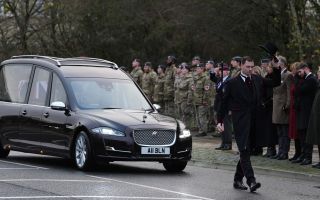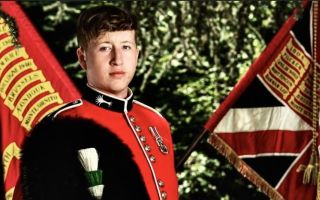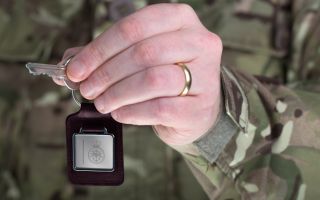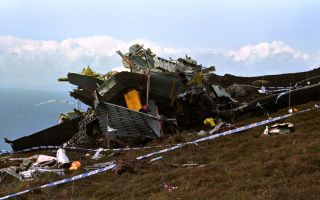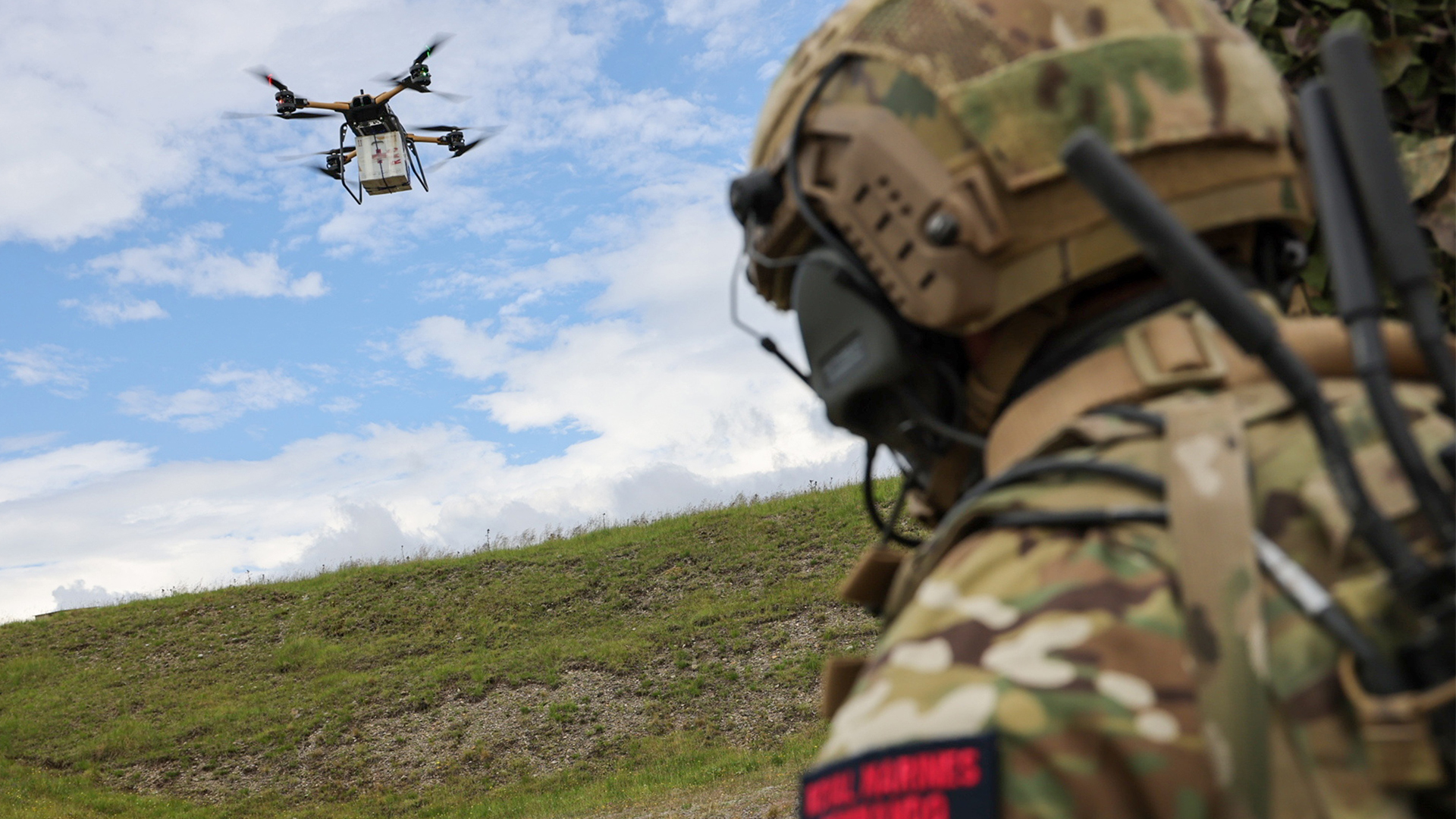
Hauling kit and an eye in the sky - Royal Marines and Navy drones now operational

Royal Marines operating behind enemy lines and Royal Navy warships will be supported from the air by two drone systems that have now been cleared for frontline operations.
After two years of trials and development, Malloy T-150s will be deployed to carry ammunition, weapons, food, personal and medical supplies to Royal Marines Commandos.
Royal Marines and the Royal Navy’s drone operators from 700X Naval Air Squadron and Commando Logistic Regiment have put the Malloy T-150 through a demanding set of tests and exercises over the past eight months.
The Malloy UAS has proved immensely valuable in rapidly bringing supplies over complex terrain, reaching places where traditional supply lines are simply unviable.
The UAV has eight rotor blades – each around two feet in length – an endurance of up to 40 minutes and top speed of 60mph.
It also has the ability to lift up to 68kg - comparable to the weight of six 7.62mm General Purpose Machine Guns.
It needs a team of two, one remote pilot and a second to monitor the drone's command unit, and can be flown manually or autonomously to designated waypoints with an underslung cargo.
The Malloy T-150 has also been undergoing operational evaluation with the UK Carrier Strike Group in the Indo-Pacific, recently delivering supplies from aircraft carrier HMS Prince of Wales to destroyer HMS Dauntless.
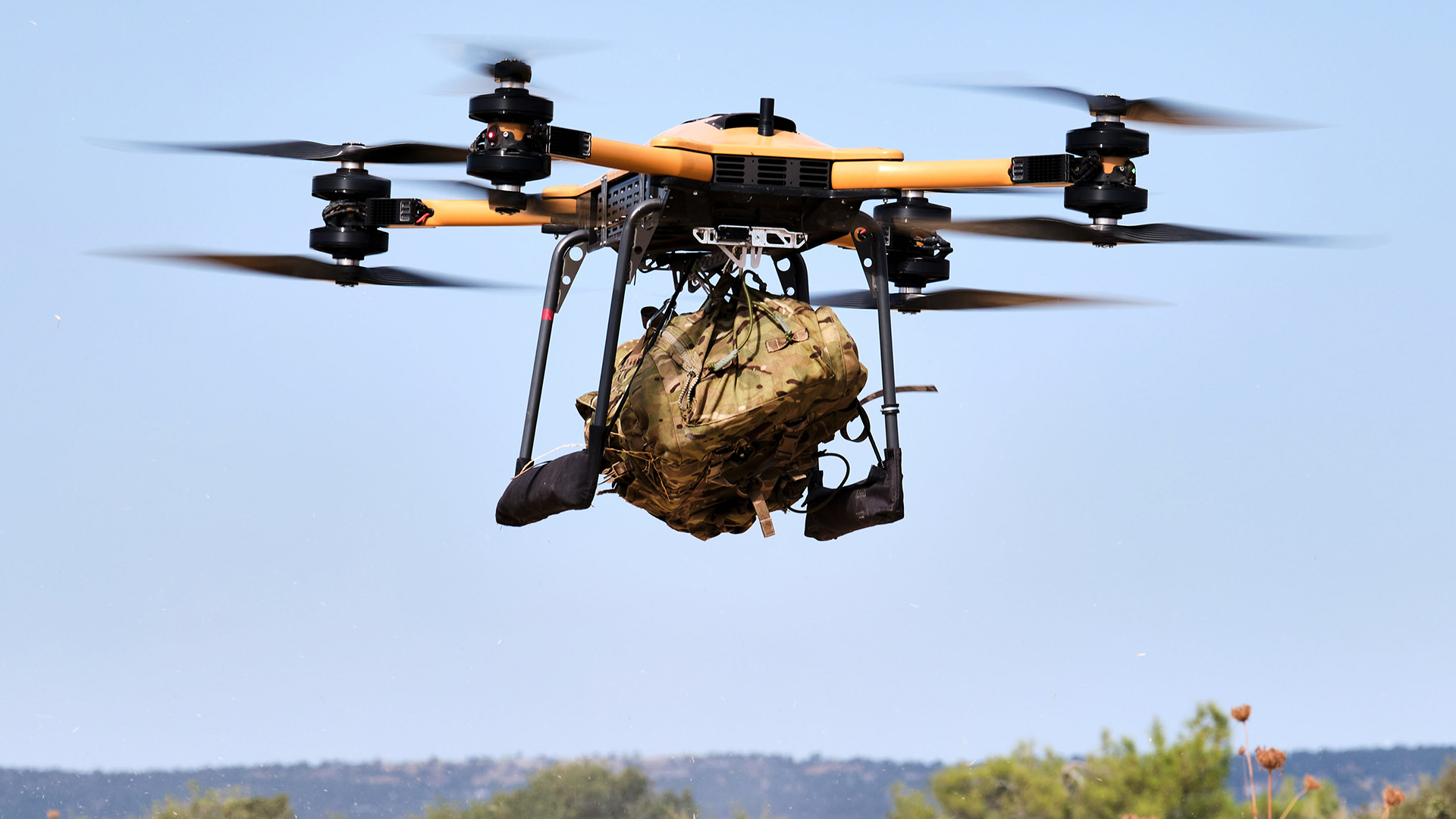
Meanwhile, Royal Navy warships will gain valuable intelligence, surveillance and reconnaissance capabilities thanks to the Peregrine.
The mini helicopter provides the Navy with a cutting-edge, shipborne uncrewed aerial uncrewed system that extends the eyes and ears of the fleet beyond the horizon.
The Royal Navy carried out flying trials of the Peregrine Rotary Wing Uncrewed Aircraft System from the deck of Type 23 frigate HMS Lancaster.
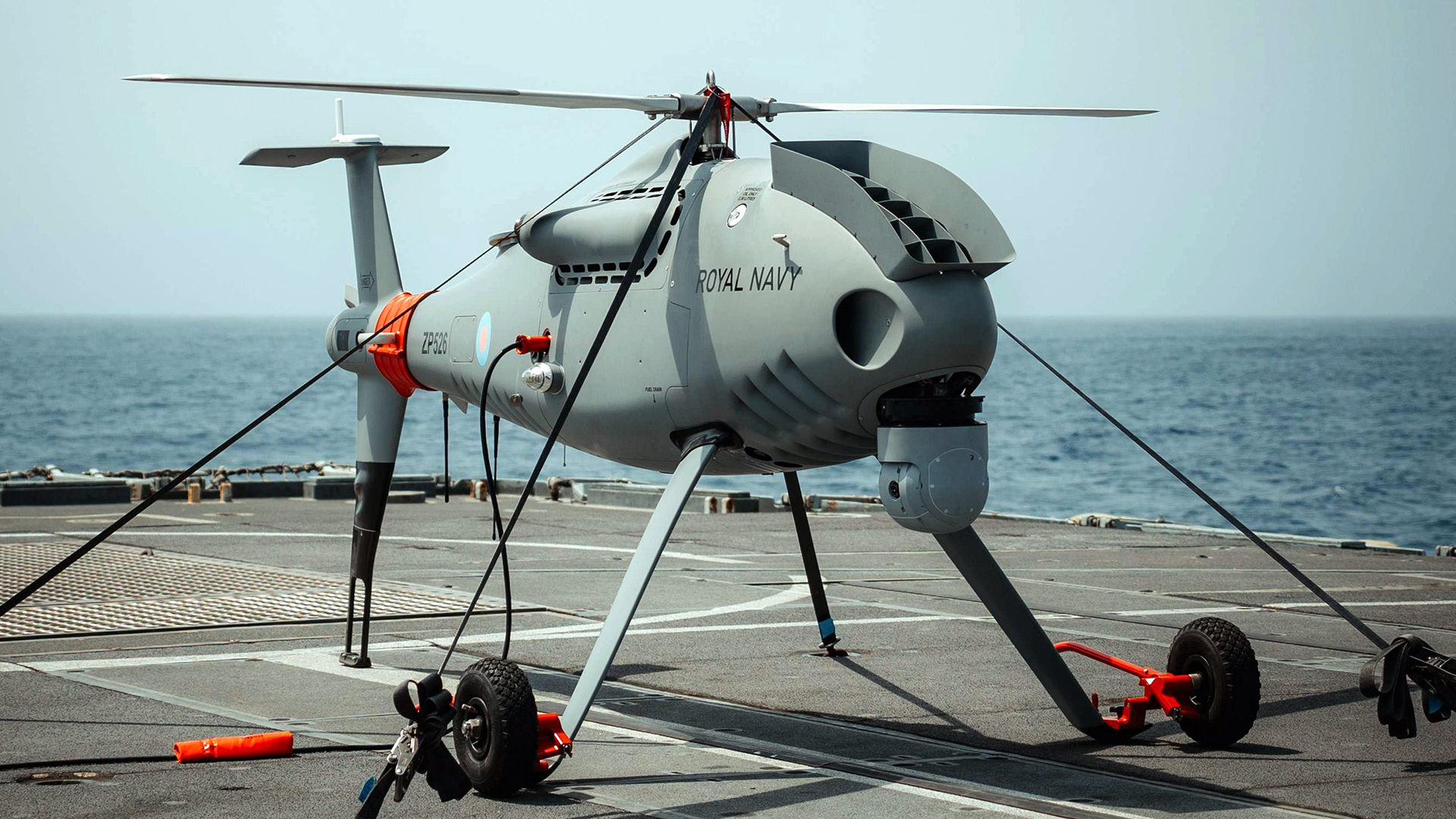
It has already proven its worth on drug-busting missions in the Gulf.
It's equipped with a powerful Thales IMaster radar, providing all-weather, day and night surveillance, tracking and target identification to support commanders in complex maritime and coastline areas.
Captain Dave Gillett said: "The introduction of Peregrine into service is a game-changer for our surface fleet.
"Its successful deployment with HMS Lancaster shows how uncrewed systems can deliver real operational advantage, extending our surveillance reach and enhancing our decision-making in theatre."


